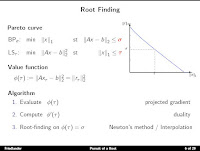When reading
subjects like this one, I am still amazed that some people can live off blogging and that other people think they can do that too based purely on traffic based ads. It is important to realize that sometimes what is important is quality traffic. This is often quantified in click-through traffic but oftentimes, the important feature of a blog is to bring awareness on a subject that is difficult to communicate on. So the whole issue of power laws on the net as featured in the
long tail argument of Chris Anderson does not seem to take into account the quality aspect of it. In other words, while the linking behavior and traffic
do follow a power law while
applications on Facebook do not, the most important question should be:
Is there a business case for using the web where the amount of traffic is not directly proportional to income or recognition ?Let me take an example featured in this blog. In some cases, people don't know about a subject or the wording associated with that subject but they are very much willing to know more because it affects them. Case in point Autism (it could be any other subject). I have made different postings on the business case to be made for an eye tracking device to detect or quantify autism (
Part I,
Part II,
Part III). When I look back at the log of queries leading to this blog (after these entries were posted), there is a fair amount of low level queries with the following keywords:
- " infant eye tracking",
- "baby not eye tracking well",
- "eye tracking autism",
- "baby's eyes not tracking",
- "newborn eye tracking",
- "detecting autism early",
- "eye tracking kids",
- "babies with eye tracking problems",
- "autism and follow eyes",
- "autism and eye tracking importance",
- "autism and eye movements"........
I would bet that a fair amount of these queries comes from parents who think that something is amiss with their kids. Linking the eye tracking behavior to Autism has probably given them some headstart with regards to getting a diagnosis. Even though, it may not be a diagnosis of autism, we know from studies that
eye tracking is important in the learning process in infants. In a more recent entry, I mentioned the difficulty of getting a diagnosis of Autism using current testing techniques.
That post has brought a steady stream of queries along the lines of the following keywords:
- "adi-r and ados diagnosis",
- "autism difficulty with standardized testing",
- "ados failed to detect asd",
- "age at which autism diagnosed",
- "pdd-nos stability of diagnosis"
In both cases, the traffic is seldom large but I am sure the entries have had some amount of influence on the readers. [ In a related note,
Aleks Jakulin and
Masanao Yajima are in the process of writing another installment of the
Venn Diagram blog entry that was started on
this blog (current
update is here). Much interesting information should come out of their work. This is important work to many people: medical doctors, families and researchers. To medical doctors and families, it points to the weakness of the current testing system. To researchers, making sense of this data should allow them to pinpoint areas of the tests that need refinement and those areas that are too coarse.
] With one out of 166 kids being in the Autistic Spectrum Disorder, it would seem to me there is ample work for people just trying to make sense of new findings (and not delivering "solutions" which is the current market). Doctors or families while being directly affected, sometimes do not have the means to interpret the new findings and need somebody who is specialized in this area. I have had several hits from other countries than the U.S. and I would guess the "market" is much larger than what the traffic shows.
In all, only the web can provide access to less than 1/100 of the population and I would venture that some percentage of that population (my guess is 10 percent) is willing to pay for a service that they cannot get otherwise. Eventually instead of a long tail or power law, we should really think of it in a different manner not unlike that featured by
Dan Bricklin
which reminds me of the
Plouffe's inverter graphs that shows how digits in numbers follow power laws (Benford's law):

One can clearly see outliers in the tail.
P.S. I am currently not running ads in this blog is very much linked to the fact that the keyword "Autism" features many ads for products for which nobody can guarantee anything.























